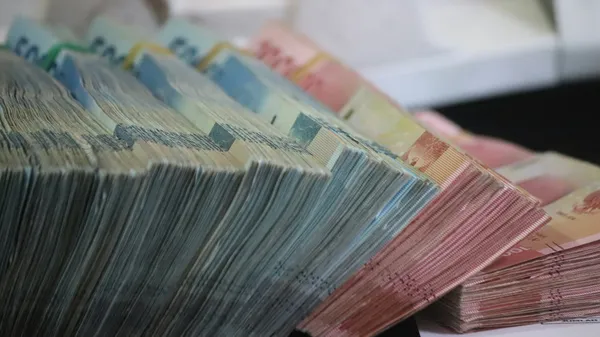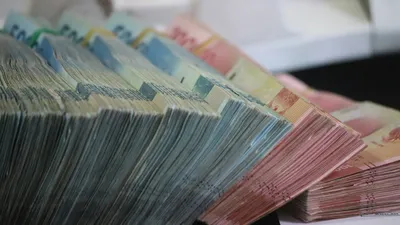In today’s interconnected global economy, understanding how currency values fluctuate is essential not only for investors and traders but also for travelers, businesses, and anyone dealing with cross-border transactions. The Malaysian Ringgit (MYR) to Indian Rupee (INR) exchange rate is one such currency pair that has become increasingly significant in 2024. This guide will break down the factors influencing the MYR to INR rate, highlight current trends, and share strategies to help you make informed decisions in a rapidly changing financial landscape.
An Introduction to the MYR and INR
Before diving deep into exchange rate trends, it’s important to understand the unique attributes of both currencies:
- Malaysian Ringgit (MYR): Malaysia’s official currency represents a dynamic economy known for its diversification across manufacturing, services, and natural resources. The Ringgit is influenced by domestic policies, global commodity prices, and trade dynamics in the Southeast Asian region.
- Indian Rupee (INR): As the official currency of India, the rupee mirrors the rapid growth and transformation of one of the world’s largest emerging markets. The INR is affected by domestic economic policies, inflation rates, and the overall global economic climate.
When these two currencies interact in the forex market, the exchange rate becomes a reflection of diverse economic narratives—one from Southeast Asia and the other from South Asia. In 2024, both Malaysia and India are navigating challenging economic environments while also adapting to new technological advancements and global trends.
Historical Context: A Brief Look Back
Historically, the Malaysian Ringgit has seen periods of volatility often in response to shifts in oil prices, trade winds, and internal political changes. Similarly, the Indian Rupee has experienced fluctuations driven by policy reforms, inflation adjustments, and foreign investment flows. Over the years, this currency pair has balanced between stability and abrupt market impulses.
A look back at previous years reveals:- Economic Resilience: Both countries have demonstrated resilience, employing policy measures to stabilize their currencies during global market uncertainties.- External Shocks: Global events such as trade disputes or unexpected economic shocks have periodically disrupted the MYR to INR exchange rate.- Policy Reforms: Ongoing economic reforms in India and adjustments in Malaysia’s fiscal policies have played a crucial role in shaping the forex dynamics.
Understanding these historical patterns provides valuable context for evaluating current trends and forecasting future movements.
2024 Market Dynamics: What’s Moving the MYR to INR Rate?
As we navigate through 2024, several key factors are at play that could drive fluctuations in the MYR to INR exchange rate:
1. Economic Policies and Central Bank Decisions
Both Malaysia and India have implemented significant policy reforms in recent years. In India, the Reserve Bank of India (RBI) continues to adjust interest rates to manage inflation and spur growth. Malaysia’s central bank similarly employs monetary policy tools to control inflation and stabilize the Ringgit. When one central bank adopts a more hawkish stance compared to the other, the exchange rate can experience strategic shifts.
2. Trade Balances and Global Demand
Trade plays an influential role in currency valuation. Malaysia’s exports, particularly in manufacturing and commodities, combined with India’s growing import demands, create a dynamic interplay that affects the rate. A surplus in Malaysia’s trade or strong export performance can strengthen the Ringgit relative to the Rupee, and vice versa.
3. Inflation and Economic Growth Differentials
Inflation is a perennial factor in forex markets. Lower inflation in one country compared to its counterpart generally attracts foreign capital, leading to currency appreciation. Recent trends indicate mixed inflation rates in both countries: while Malaysia strives to keep its inflation in check amid global commodity price fluctuations, India battles with a range of inflationary pressures driven by domestic demand.
4. Geopolitical Influences and Global Market Sentiment
In today’s global market, geopolitical tensions, trade negotiations, and international economic policies often lead to short-term volatility. Although these impacts can be temporary, rapid market reactions may affect the MYR to INR exchange rate as investors reposition their portfolios in response to unfolding events.
Real-Life Insights: Stories from the Field
Consider the story of Arjun, an Indian entrepreneur focused on importing Malaysian goods. A few years ago, Arjun experienced sudden fluctuations in the exchange rates that increased his operational costs unexpectedly. By keeping a close watch on economic indicators and leveraging real-time forex platforms, he was able to time his transactions more accurately and secure better rates. His proactive strategy underscores the importance of staying informed.
Another example comes from a Malaysian traveler planning a trip to India. With thorough research and planning, she tracked the MYR to INR rate and discovered that a favorable period was on the horizon, which allowed her to exchange money at a lower cost, thereby stretching her travel budget further.
These experiences illustrate that whether you are running a business or planning a vacation, understanding and monitoring exchange rate trends can provide a competitive edge.
Tools and Tips for Monitoring the MYR to INR Exchange Rate
For those keen on keeping tabs on the fluctuations between the Ringgit and the Rupee, numerous tools and strategies can prove helpful:
- Real-Time Forex Platforms: Websites such as XE, Bloomberg, and OANDA provide live updates, historical charts, and detailed analyses. These tools help in identifying patterns and potential turning points.
- Mobile Applications: Many banks and financial institutions offer dedicated forex tracking apps. These apps not only help with tracking exchange rates but also send notifications about significant market changes.
- Economic Calendars: Keeping an eye on economic events such as policy announcements from the RBI or Bank Negara Malaysia (BNM) can alert traders and businesses about upcoming rate movements.
- Technical Analysis Tools: For the more technically-inclined, using indicators like moving averages, Relative Strength Index (RSI), and MACD can help identify when to make a move in the market.
- Consult Financial Experts: Sometimes, expert advice can shine a light on subtle market nuances. Following market analysis reports by financial institutions or subscribing to forex newsletters may provide additional clarity.
Strategic Considerations for Different Audiences
Different stakeholders – from individual investors to multinational companies – have varying needs when it comes to managing currency risk. Here are some strategies tailored for various groups:
For Investors and Traders
Investors with a speculative focus can leverage short-term fluctuations for profit. Hedging strategies, such as forward contracts or options, can serve as powerful tools to secure favorable rates or protect against adverse movements. Technical analysis combined with a vigilant understanding of central bank policies can help refine timing and execution.
For Business Owners
Businesses engaging in cross-border transactions need stability to manage costs effectively. Companies can consider:- Hedging Transactions: Using financial instruments to lock in an exchange rate at a specific time.- Currency Diversification: Maintaining accounts in both currencies can reduce the risk of sudden adverse movements.- Long-Term Forecasting: Monitoring economic indicators and policy decisions to better predict exchange rate trends can help in budget planning and mitigating currency risk.
For Travelers
For individuals traveling from Malaysia to India or vice versa, a favorable exchange rate can stretch travel funds further. It is advisable to:- Monitor Rates Ahead of Travel: Use mobile apps to track the MYR to INR rate and time exchanges wisely.- Plan Currency Conversion: Explore reliable money exchange services that offer competitive rates and low transaction fees.- Stay Updated: Keep an eye on travel advisories and economic news that may affect exchange rates during the travel period.
Delving into the Future: What’s Next for MYR to INR?
The future trajectory of the MYR to INR exchange rate is inherently linked to both national politics and international market trends. Here are a few potential scenarios to consider:
Economic Reforms and Policy Shifts
Both Malaysia and India are actively working on boosting their economic robustness. Upcoming policy shifts, infrastructure investments, and digital advancements may set the stage for improved trade balances and economic growth. Investors should stay tuned to policy announcements and economic data releases for signs of major shifts.
Global Market Integration
With globalization accelerating, emerging markets like India and established markets like Malaysia are increasingly interconnected. Fluctuations in global commodity prices or changes in international trade agreements could have ripple effects on the rate. Accordingly, global market sentiment will remain a key driver.
Technological Advances
Digital transformation in financial services is set to bring more transparency and efficiency to forex markets. Innovations in blockchain technology, for instance, could help secure transactions and reduce discrepancies in currency conversion processes. As these technologies mature, they will likely lead to more predictable and stable exchange rate movements.
Environmental and Social Factors
An often-overlooked facet of modern economics, sustainability practices and social policies, will also play a role. As both nations move towards greener economies, shifts in energy availability and environmental policies may indirectly affect trade volumes and, in turn, exchange rates.
Real-World Strategies: Practical Steps Towards Effective Currency Management
Navigating the complexities of the MYR to INR exchange rate doesn’t have to be daunting. Here are some practical steps and habits that can help anyone better manage currency risks or optimize conversions:
- Set Up Alerts: Many forex platforms allow you to set custom alerts when the exchange rate hits a target. This helps ensure you don’t miss out on favorable rate opportunities.
- Research Regularly: Make it a habit to read financial news and track economic data from both Malaysia and India to understand the market sentiment.
- Diversify Transactions: If you frequently engage in cross-border transactions, consider spreading your conversions over a period to mitigate short-term volatility.
- Consult Financial Tools: Utilize calculators and forecasting tools available online to simulate different scenarios. These can help in making sound decisions based on data rather than speculation alone.
- Stay Patient: Currency markets are known for their volatility. Patience and a long-term perspective often yield better results than reactive decision-making.
Conclusion: A Balanced Approach to MYR to INR
The Malaysian Ringgit to Indian Rupee exchange rate is far more than just a number on a forex board—it encapsulates the complex interplay of economic policies, global events, and market sentiment across two vibrant regions. Whether you are an investor looking for profit opportunities, a business managing multi-national transactions, or a traveler aiming to maximize your budget, a clear understanding of the drivers behind the MYR to INR rate is essential.
By harnessing a blend of financial tools, expert insights, and time-tested strategies, you can navigate this dynamic currency pair with confidence. With the continuous evolution of economic reforms, global integration, and technological advancements, staying informed and proactive is your best asset.
Keep this comprehensive guide as a reference and regularly update your knowledge with reliable sources and expert analyses. In a world where every percentage point matters, an informed decision today could translate into significant financial advantages tomorrow.
Happy trading, budgeting, and traveling! May your financial journey through the world of exchange rates be as rewarding as it is insightful.




.webp)

.webp)



.webp)
.webp)
.webp)
.png)